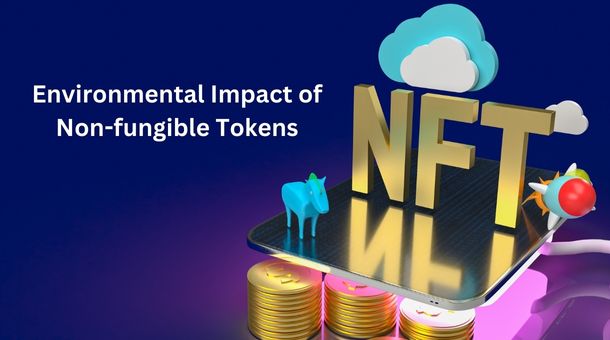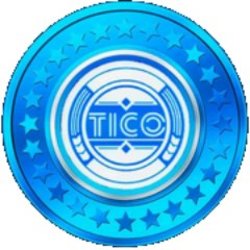Environmental Impact of Non-fungible Tokens
You may additionally have heard about non-fungible tokens (NFTs) and how they impact the environment. Even although NFTs themselves do now not motive any environmental effect, their effect on our weather can be related to how they may be produced.
The manner in that NFTs are created can be relatively strength intensive. Since Ethereum transitioned to evidence-of-stake, most NFTs have minted a blockchain that doesn’t require the huge amounts of strength that a proof-of-painting blockchain does.
Blockchains that require an energy-intensive procedure, crypto-related or otherwise, can generate excess carbon if they devour electricity from non-renewable resources.
Keep studying to recognize how NFT manufacturing consumes power and examine what developers have executed to reduce their effect on the surroundings.
Environmental Impact of Non-fungible Tokens
Why Are NFTs Bad for the Environment?

NFTs proportion one harmful trait with their cryptocurrency cousins: they both
use a ton of power.
Bitcoin’ mining’ already generates
38 million tons of CO2
consistent with yr, extra than the carbon footprint of Slovakia. And 2018 examination was published in.
Nature Climate Change
observed Bitcoin emissions by myself could enhance Earth’s temperature by degrees. “Bitcoin is an evidence-of-work blockchain, which means it uses evidence-of-work (PoW) consensus mechanisms to secure the blockchain and verify transactions. PoW method that miners compete in opposition to every different to mine a block” says
Susanne Köhler
A PhD fellow and sustainable blockchain generation researcher at Aalborg University in Denmark. “In those competitions, specialized computers generate numerous trillions of guesses in line with 2d to try and win. You may want to name it a brute-force approach. This is what calls for loads of electricity.”
To place this into an angle, Bitcoin’s day by day carbon footprint equals looking 57,000 hours of YouTube videos. And its daily energy usage is equal to the amount of strength an average American household uses over 25 days.
The environmental impact of NFTs is comparable because it uses power-in-depth computer transactions to authenticate and sell the artwork. “NFTs require transactions on a blockchain—to create NFTs, to bid, to pay for the NFT after prevailing the bid, or to transfer the ownership,” Köhler says.
“So you may associate the share of transactions NFTs want to their proportion of power intake and companion environmental footprint. Their related effect increases with an expanded hobby in NFTs and greater human beings shopping for and promoting NFTs.”
The strength used for these transactions is trouble, too, as Köhler says miners are typically incentivized to use cheap power to maximize income (like fossil fuels). There’s also the subject of the technology used:
“Production and recycling of the hardware best make up a small proportion,” she adds. “That being stated, the usage of specialized computers for mining that may become unprofitable within a few years creates massive quantities of e-waste.”
How make NFTs environmental friendly?
There are some ways to make NFTs more environmentally friendly. First, there may be a move inside the crypto area to apply extra renewable electricity resources for mining. But that answer poses its troubles of continued stress on the electric grid, no longer to mention that renewable energy should cross closer to other, more pressing needs, together with retaining people’s lighting fixtures.
Other alternatives contain modifications with the underlying era for NFTs. A blockchain that relies on the more electricity-green proof-of-stake machine can reduce consumption and greenhouse gas emissions attributed to NFTs.
With an evidence-of-stake device, miners lock up a certain quantity of cryptocurrency, which gives them the hazard of affirming the subsequent block at the blockchain. Computer strength will become inappropriate.
Several blockchains already use the evidence-of-stake machine and assist NFTs, such as Cardano (CRYPTO: ADA) and Solana (CRYPTO: SOL). Ethereum has been operating to migrate to a proof-of-stake device referred to as Ethereum 2.0. It’s been working at the exchange for years, though, and there has yet to be an exact date for the transfer.
Another approach to the environmental mission is to apply a 2nd layer on a pinnacle of the blockchain. A 2nd layer would allow all of us to make transactions out of doors of the blockchain, after which we batch-process them all at once in one big transaction on the blockchain itself.
There are numerous “Layer 2” answers for all styles of blockchains, one of the maximum noteworthy being the Bitcoin Lightning Network.
What does the future hold for NFTs?
There’s a wide push from both artists and collectors to make NFTs extra environmentally friendly. Not best, there may also be pressure for the complete cryptocurrency enterprise to lessen the environmental effect of crypto belongings.
The enterprise will supply if the marketplace demands a more environmentally responsible way to shop for, promote, and gather NFTs. Solutions exist already, and many NFT marketplaces and platforms are pushing the environmental friendliness of their offerings.
We may additionally see extra NFT initiatives migrate to those platforms and switch to blockchains that use the evidence-of-stake system to verify transactions.
But every blockchain that supports clever contracts necessary for NFTs has the reliability and recognition of Ethereum. So, bigger NFTs, such as precise creations from artists like Beeple, may also want to use the Ethereum blockchain. To that quit, it’s at the Ethereum community emigrated to Ethereum 2.0 or developed a reliable Layer 2 answer for NFTs on the Ethereum blockchain.
Conclusion
The function of NFTs going ahead is unsure, but the environmental effect of NFTs, specifically the power used in mining to confirm the blockchain transaction, should be addressed. Solutions include transferring to new proof-of-stake systems and batching transactions to lessen energy intake.
Environmental Impact of Non-fungible Tokens Environmental Impact of Non-fungible Tokens Environmental Impact of Non-fungible Tokens Environmental Impact of Non-fungible Tokens Environmental Impact of Non-fungible Tokens Environmental Impact of Non-fungible Tokens Environmental Impact of Non-fungible Tokens Environmental Impact of Non-fungible Tokens Environmental Impact of Non-fungible Tokens Environmental Impact of Non-fungible Tokens









































